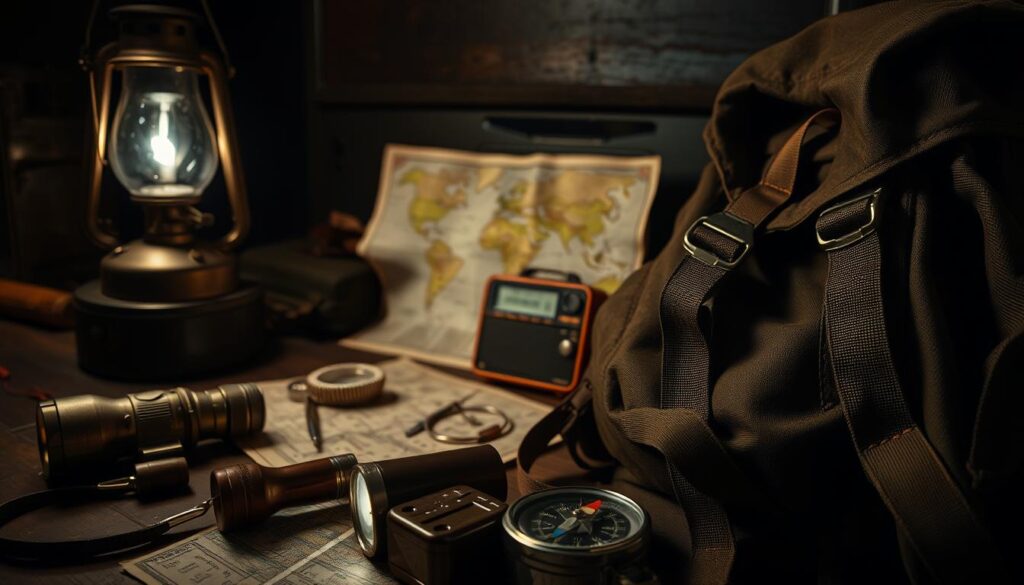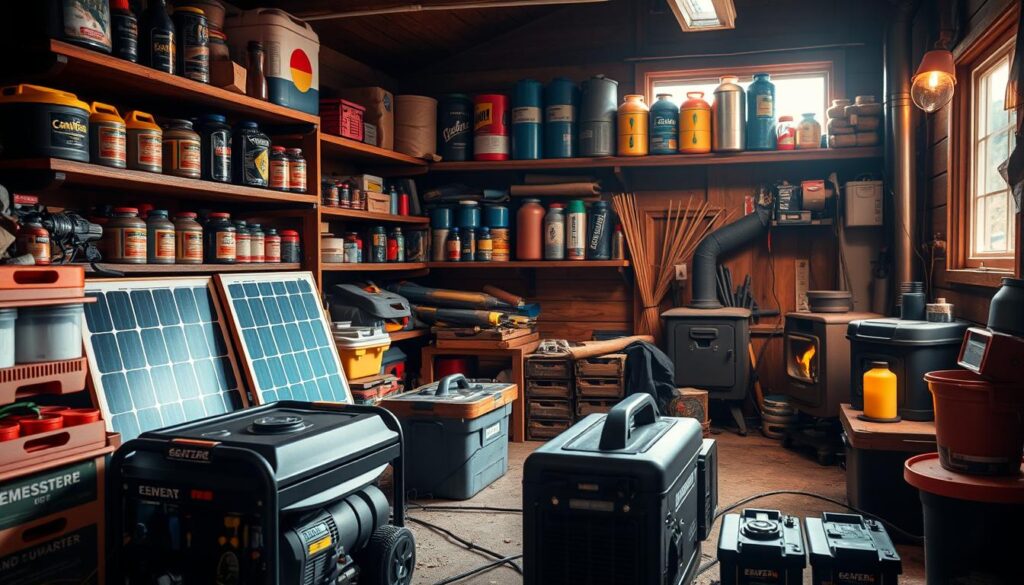Starting a fire without modern tools is a skill passed down through generations. It’s key for outdoor lovers and survivalists. I remember my first fire started with a primitive method – it was thrilling and made me feel proud.
One of the best ways to start a fire is with a friction fire method called the bow drill.
The bow drill has been around for centuries and is used today for primitive fire making. It takes practice, but with the right help, anyone can get good at it.
Key Takeaways
- Understand the basic components of a bow drill
- Learn how to assemble and use a bow drill effectively
- Discover tips for successful fire making with a bow drill
- Practice using a bow drill to build confidence
- Explore the benefits of using a bow drill for primitive fire making
Introduction to Bow Drills
A bow drill is a simple tool for making an ember. It’s a key step in primitive fire making. For centuries, different cultures have used it to start fires without modern tools.
What is a Bow Drill?
A bow drill has a few basic parts. It includes a bow, a drill, a fireboard, and a handhold. By moving the bow, you make the drill rub against the fireboard. This creates heat and eventually an ember.
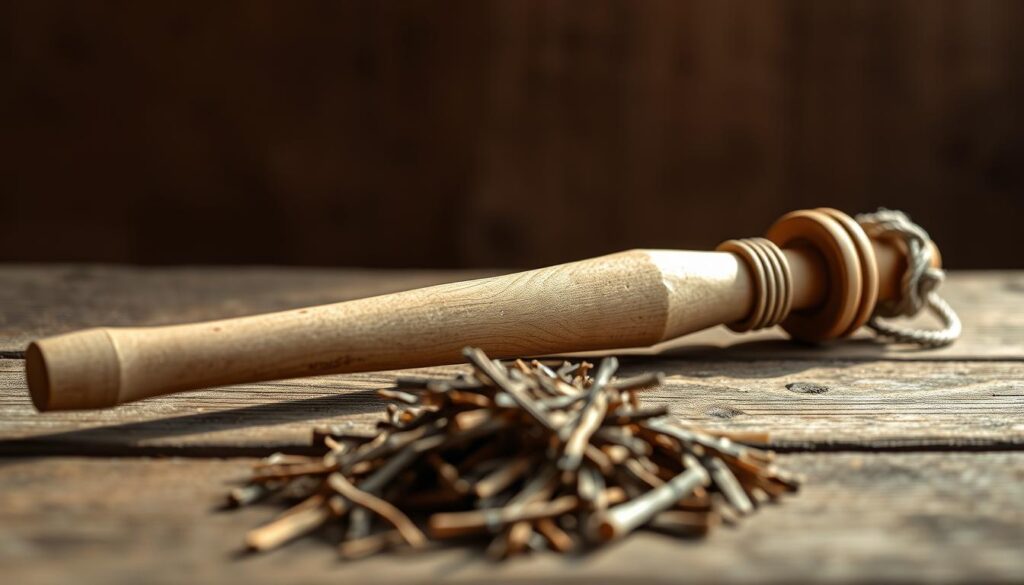
Importance of the Bow Drill in Primitive Fire Making
The bow drill is vital for primitive fire making. It lets you start a fire on your own. Fire is key for survival in the wild, as it gives warmth, light, and a way to cook food.
Learning to use a bow drill takes practice and patience. But, the joy of mastering it is immense. It connects you to a long-standing tradition of fire starting.
Essential Components of a Bow Drill
A bow drill is more than just a tool; it’s a system of components working together to create fire. Understanding these components is vital for effective primitive fire making.
Overview of Bow Drill Parts
A bow drill consists of several key parts: the drill, the fireboard, the bow, and the handhold. Each part plays a critical role in generating the friction and heat needed to start a fire.
- The drill is typically made from a hardwood, such as yucca or cedar, due to its durability and ability to withstand friction.
- The fireboard is made from a softer wood, like cottonwood or willow, which is easier to indent and creates a fine powder when friction is applied.
- The bow is a flexible branch that holds the drill in place, providing the necessary tension and motion.
- The handhold or bearing block is used to apply downward pressure on the drill, ensuring consistent friction.
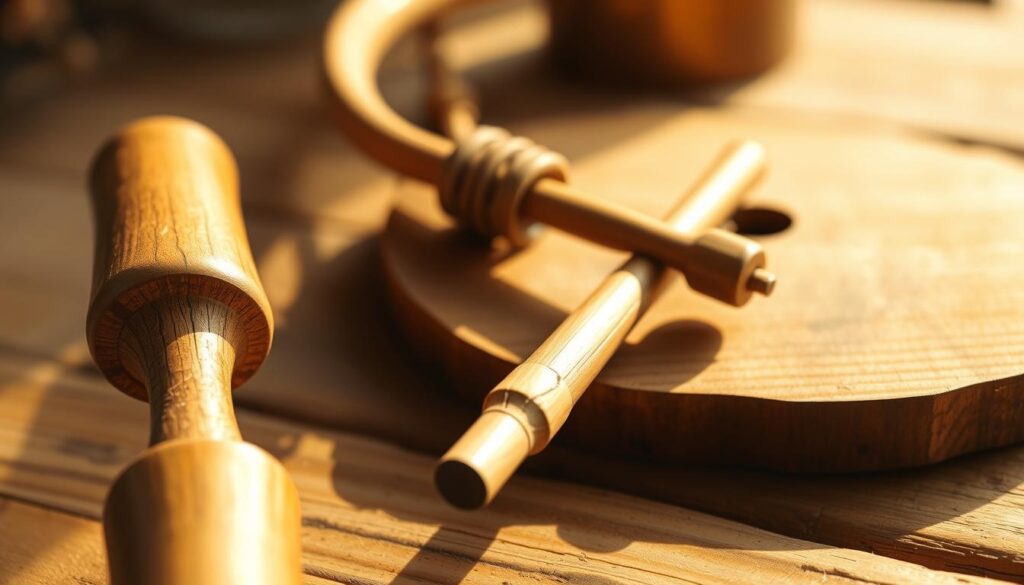
Selecting the Right Materials
Selecting the right materials for your bow drill is critical for its effectiveness. The drill and handhold require hardwoods that can withstand the friction and pressure, while the fireboard should be made from a softer wood that can be easily indented.
When choosing materials, consider the following factors:
- Durability: Hardwoods like oak or maple are ideal for the drill due to their density.
- Softness: Softer woods like cedar or pine are better suited for the fireboard as they can be easily scratched and create an ember.
- Flexibility: The bow should be made from a flexible branch that can bend without breaking.
Preparing Your Bow and Drill
Preparing your bow and drill involves shaping and smoothing the components to ensure they work effectively together. Start by shaping the drill to a point, making sure it’s straight and even. The fireboard should have a small indentation where the drill will rotate.
To prepare your bow drill:
- Shape the drill and ensure it’s smooth.
- Create a notch in the fireboard and a small indentation.
- Adjust the bowstring to the right tension.
How to Use a Bow Drill
Starting a fire with a bow drill needs patience, practice, and the right method. It’s a way people have used for centuries. With the right help, anyone can learn it.
The method makes friction to get an ember. This ember can start a fire. It’s great for outdoor fans and those interested in survival skills.
Step-by-Step Guide to Starting a Fire
To start a fire with a bow drill, follow these steps:
- Get your bow drill parts ready, like the bow, drill, fireboard, and tinder.
- Put the bowstring around the drill and tie it with the handhold.
- Make a small notch in the fireboard and a depression next to it.
- Place the drill on the fireboard, making sure it’s in the depression.
- Start bowing, applying gentle to moderate pressure.
- Keep bowing until you see an ember, a dark, glowing coal.
- Blow gently on the ember to make it a flame.
- Add tinder to the flame, growing the fire.
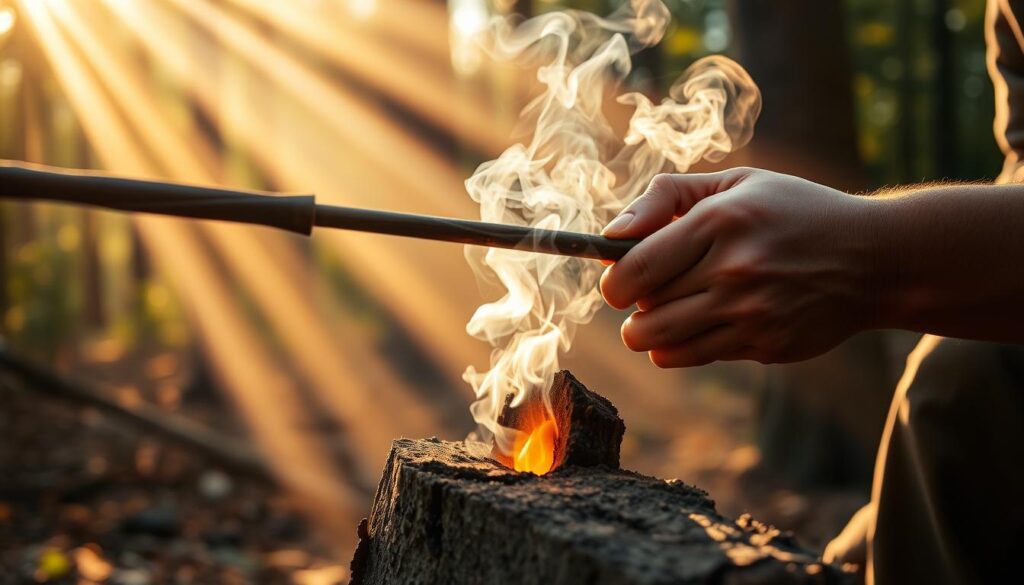
Tips for Successful Fire Making
To make a fire with a bow drill, keep the right posture and consistent pressure. Here are some tips:
- Make sure your bow drill parts are the right materials. The drill should be straight and sturdy, and the fireboard should be softwood.
- Keep your tinder dry and fluffy to catch fire easily.
- Practice your bowing to get a smooth motion.
- Start with gentle pressure and increase as needed to make heat.
Here’s a summary of key factors for using a bow drill:
| Component | Material | Characteristics |
|---|---|---|
| Drill | Hardwood | Straight, sturdy, and smooth |
| Fireboard | Softwood | Soft, dry, and prone to generating dust |
| Tinder | Dry, fluffy material | Easily ignitable, dry, and fluffy |
By following these tips and practicing, you can master starting a fire with a bow drill. The key is patience, the right technique, and practice.
Choosing the Right Wood for Your Drill
Choosing the right wood for your bow drill is key in making fire the old way. The wood you pick can make a big difference in how easy it is to get an ember. This ember is the first step to starting a fire.
The drill is the most important part of a bow drill. It’s the part that rubs against the fireboard to make heat and an ember. The wood of the drill can really affect how well it works.
Best Types of Wood for Bow Drills
Softer woods are best for bow drills. They are less dense, which makes it easier to create the friction needed for heat and an ember. Some top picks include:
- Cottonwood: Soft and easy to shape.
- Willow: Versatile and soft, with a straight grain.
- Aspen: Soft and low density, easy to work with.
These woods are not only easier to work with but also produce less smoke and debris. This makes starting a fire cleaner and more efficient.
Characteristics of Good Firewood
Good firewood for bow drills has certain qualities that make it better. These include:
- Low Density: Less dense woods are easier to drill into, needing less effort to make heat.
- Dryness: Dry wood is key for making fire. Moist wood makes it hard to get an ember.
- Straight Grain: Wood with a straight grain is better because it’s more consistent and easier to shape.
By choosing wood with these qualities, you can greatly improve your chances of starting a fire with a bow drill.
Techniques for Effective Bowing
Effective bowing is key to starting a fire with a bow drill. It involves knowing the bow motion and keeping pressure steady.
Understanding the Bow Motion
The bow should be held stiff, slightly bent, and as long as your arm. This setup helps control the bowstring and drill well.
To get the bow motion right, hold the bow correctly and move it smoothly. The bowstring should be in good shape, without wear that could harm its performance.
“The key to successful bowing is a smooth, consistent motion that generates heat on the drill.”
Maintaining Consistent Pressure
Keeping pressure steady is essential for friction to start a fire. The pressure should be firm but not too hard. Too much pressure can make the drill bind or the bowstring break.
To keep pressure steady, adjust the bowstring right and make sure the drill is in the right spot. The table below shows important factors for adjusting the bowstring and keeping pressure.
| Factor | Description | Impact on Bowing |
|---|---|---|
| Bowstring Tension | The tightness of the bowstring | Affects the friction generated and the ease of bowing |
| Drill Alignment | The positioning of the drill in relation to the fireboard | Influences the effectiveness of the friction generated |
| Bowing Speed | The speed at which the bow is moved | Impacts the heat generated and the likelihood of ignition |
By learning the bowing technique, you can boost your chances of starting a fire with a bow drill. This includes mastering the bow motion and keeping pressure steady.
Common Challenges When Using a Bow Drill
One big challenge I faced was getting enough friction to make an ember. It’s key to get the right amount of friction. Too little, and you won’t get an ember. Too much, and the drill will get too hot and stop working.
To beat these challenges, knowing how the bow drill works is key. You need to learn how to fix common problems. This includes adjusting the bowstring, keeping the pressure steady, and dealing with frustrations.
Troubleshooting Common Issues
Some common problems with bow drills include not getting an ember or the bowstring being off. To fix these, check the bowstring’s tension and adjust it. Also, make sure the drill and bow are set up right.
Handling Frustrations and Setbacks
Using a bow drill can be tough, but it’s normal. Remember, setbacks are part of learning. Being patient, persistent, and kind to yourself helps a lot.
Knowing the common problems and how to solve them makes you better at using a bow drill. With practice and patience, you’ll get good at starting fires this old-fashioned way.
Enhancing Your Bow Drill Skills
To get better at bow drill, remember it’s a journey. Improving your skills means learning the technique and practicing in different situations. This not only makes you better but also prepares you for starting fires in various conditions.
Practicing in Different Conditions
It’s important to practice in different settings. This helps you see how things like humidity and weather affect starting fires. For example, trying with hard wood can improve your technique, even if you don’t get a coal.
- Try practicing in different weather conditions, such as rain or high winds.
- Experiment with various types of wood to understand their characteristics.
- Practice in different terrains to adapt to various environmental conditions.
Learning from Mistakes
Making mistakes is a big part of getting better at bow drill. Think about what went wrong when you couldn’t start a fire. Was it your technique, the material, or something else?
- Identify the mistake: Understand what caused the failure.
- Adjust your technique: Make necessary adjustments based on your analysis.
- Practice again: Apply the adjustments and continue practicing.
By practicing in different conditions and learning from mistakes, you can really improve your bow drill skills. The goal is to become good at starting fires with a bow drill. This is a key skill for outdoor survival.
Safety Considerations
Using a bow drill needs skill and awareness of safety considerations. It’s key to be careful when making fire this way. You must watch out for dangers.
Fire Safety Tips
Keeping safe with a bow drill is very important. Always have water or a fire extinguisher ready. “Fire safety is not just about having the right equipment, but also about being prepared for any situation,” experts say.
- Maintain a safe distance from flammable materials.
- Clear the area of dry leaves, twigs, and other combustible materials.
- Be aware of the wind direction to prevent the fire from spreading.
Protecting Yourself While Practicing
Protecting yourself is just as important. Wear gloves and safety glasses to avoid injuries. Be careful of the drill’s motion and keep your hands and face away.
As you keep practicing, you’ll learn about risks and how to avoid them. By focusing on safety considerations and following fire safety tips, you can enjoy making fire the old way.
Conclusion: The Reward of Mastering the Bow Drill
Learning to use a bow drill is a rewarding journey. It connects you with ancient skills vital for survival in the wild. With time and effort, you can start fires like our ancestors did.
My own journey with the bow drill taught me the importance of never giving up. The joy of overcoming obstacles is unmatched. As you keep practicing, you’ll see how simple and effective this method is.
Practical Applications
The skills you learn here are useful in many situations. Whether you’re on a camping trip or facing a survival challenge, knowing how to start a fire is key. These skills are a must for anyone who loves the outdoors or values self-sufficiency.
Personal Growth
Mastering the bow drill is more than just starting a fire. It’s about gaining a new skill and boosting your confidence. As you get better, you’ll grow to appreciate the traditional skills even more.
FAQ
What is a bow drill?
A bow drill is a tool to make an ember for starting fires. It has a drill, a fireboard, a bow, and a handhold.
What are the essential components of a bow drill?
A bow drill needs a drill, a fireboard, a bow, and a handhold. The drill is usually hardwood, and the fireboard is softer wood.
How do I use a bow drill to start a fire?
To start a fire with a bow drill, create friction between the drill and fireboard. This makes an ember. Keep the right posture, apply steady pressure, and solve common problems.
What type of wood is best for a bow drill?
Use softer woods like cottonwood or aspen for the fireboard. Hardwoods are better for the drill. Wood density and dryness matter too.
How do I maintain consistent pressure while using a bow drill?
For consistent pressure, know the bow motion and hold it right. Adjust the bowstring as needed. Troubleshoot and handle frustrations well.
What are some common challenges when using a bow drill?
Challenges include making enough friction and keeping pressure steady. Also, dealing with frustrations and setbacks. Adjust the bowstring, posture, and practice in various conditions.
How can I enhance my bow drill skills?
Improve by practicing in different settings and learning from mistakes. Use bad wood to refine your form. Learn from mistakes and tweak your technique.
What safety considerations should I keep in mind when using a bow drill?
Keep a safe distance and handle flammable materials carefully. Protect yourself from injuries. Follow fire safety tips and use the bow drill safely.
What is the value of learning primitive fire skills like using a bow drill?
Learning to use a bow drill is valuable for wilderness survival and bushcraft. It also brings personal satisfaction and achievement.


